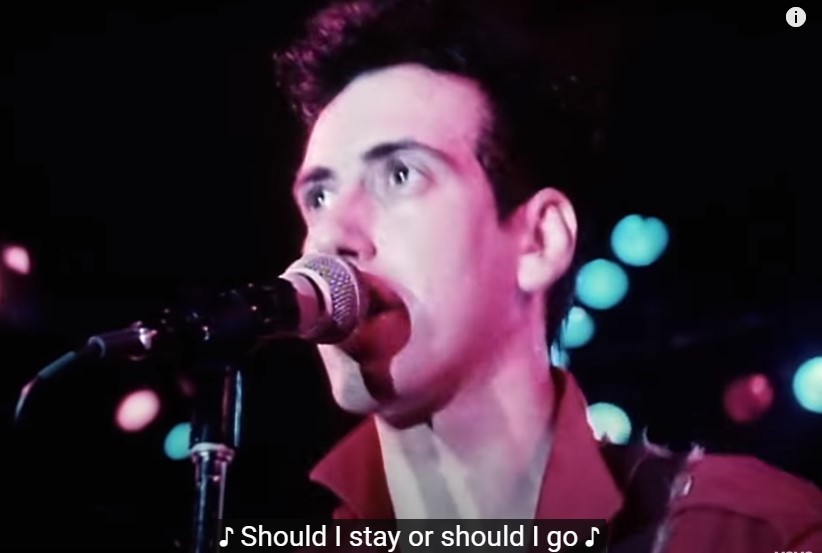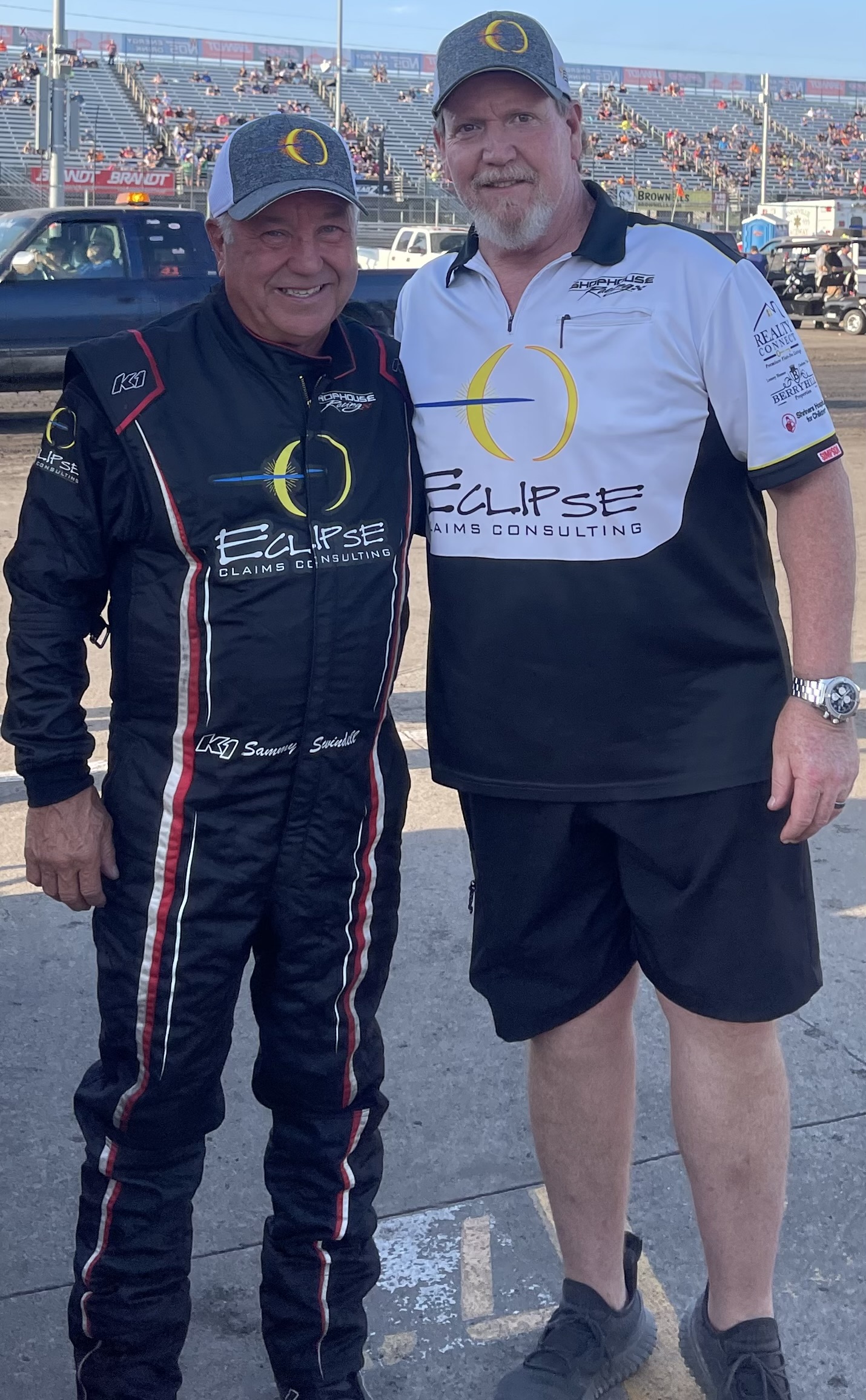Should I stay or should I go? This pivotal question is one many of us grapple with in our relationships. Everyone in long-term bonds will, at some point, confront moments of doubt or uncertainty. I believe it is essential for individuals to reflect on the underlying reasons for these feelings. A critical question to consider is, “Why am I in this relationship?” By understanding the purpose and fulfillment derived from the relationship, you can make more informed decisions about its future implications, whether you stay, leave, or change.
While interviewing Tim Woodard over the past two weeks, I returned to these thoughts about staying or leaving relationships. For public adjusters, “Why should you join an association? What do you get out of it? Why join one versus another?”
So, I interviewed Tim Woodard not just because he is a recognized leader in the public adjusting community with peers saying he is all that and voting him into leadership positions. I wanted to question a person who has left one industry to become a public adjuster. Then, after successfully becoming a public adjuster, he left a “cushy” position at a great public adjusting firm to start his own public adjusting business.
Here is my interview with Tim Woodard.
Why did you become a public adjuster?
My background is working as a restoration contractor. I grew interested in becoming a public adjuster due to several factors. First, I’ve always been passionate about assisting people in times of need. Second, my background in construction and sales of restoration services naturally guided me toward this field. Finally, I observed policyholders struggling with insurance claims and trying to handle those on their own. To me, it highlighted a significant need for advocacy and expertise. Becoming a public adjuster became my solution to address this need, helping individuals and businesses maximize their insurance claims in a fair adjustment.
How did you learn and who did you learn from about “the art of public adjusting?”
While working in the insurance restoration and construction industry, I discovered the role of a public adjuster. This knowledge and skillsets dovetailed to be applied in a different way when public adjuster licensing was introduced in Texas. My role as a salesman and estimator for a preferred vendor for insurance companies involved providing building damage estimates for their claims. I quickly understood that an accurate estimate is pivotal for claim negotiation. Many people often prioritize the final figure over a correct scope of work.
I’ve absorbed knowledge from industry greats. I had the privilege of working alongside Scott Davidson, Pat Bickford, and Jim Beneke at Adjusters International in Dallas. Then, I was mentored by Art Jansen Sr., Art Jansen Jr., and Tom Krautner from Jansen International. They have been instrumental in shaping my career. I cannot say enough good things about Art Jansen, Jr., and how much he has played in my success.
After working for Jansen and Adjusters International for over a decade, you left and started your own business. What was that transition like?
Departing from Jansen and Adjusters International after a fruitful career was a monumental and tough decision. My motivation stemmed from the aspiration for personal and professional growth. Even though my tenure there was insightful and rewarding, I believed that starting my own venture would enable me to provide more personalized services, create a broader impact, and afford more time with my family. The shift required building a client base from scratch and carving out my brand’s identity, which was intimidating at moments. But the freedom to innovate and directly cater to client needs in the manner which I control has made the entire process worthwhile.
Why are you a member of numerous regional public adjuster organizations? How do they benefit you?
Membership in regional public adjuster associations like TAPIA, FAPIA, and CAPIA is crucial for several reasons. Primarily, they serve as a hub for networking and exchanging insights with industry counterparts. They keep members abreast of industry changes, best practices, and offer a platform for collaborative advocacy initiatives. These organizations also present invaluable continuing education opportunities, which are vital for maintaining expertise and professional certifications.
For public adjusters in Texas not affiliated with TAPIA, what are a few compelling reasons why they should join TAPIA?
For public adjusters in Texas who haven’t yet found their place within TAPIA, let me share three reasons why aligning with this association is not just beneficial but transformative for your career:
1. Networking and Collaboration: At its core, TAPIA is much more than just a gateway; it’s a community. Becoming a member will not only connect you with other Texas-based public adjusters but also immerse you in a nurturing environment where collective wisdom is valued. This offers you the chance to learn from seasoned experts, share your own experiences, and collaboratively brainstorm solutions to common challenges. By aligning with TAPIA, you’re not just joining an organization; you’re becoming a part of a larger, supportive family that is deeply rooted in the Texas expertise and camaraderie.
2. Advocacy: In the ever-evolving world of insurance, having a strong voice is paramount. TAPIA doesn’t just speak; it has a seat at the table upholding the rights and interests of both public adjusters and policyholders in Texas. As part of TAPIA, you’re amplifying that advocacy, making sure that our collective concerns and ideas aren’t just heard but heeded. The strength of our profession’s voice is fortified with each member we add, making every policy, every regulation, and every decision more informed and considerate of our collective needs.
3. Education: In a competitive landscape, staying ahead requires more than just skills; it demands constant change. TAPIA doesn’t just offer access; it opens the doors to a treasure trove of educational resources and programs. We want to ensure that every member stays abreast of the latest trends and techniques for handling the types of claims we face in Texas.
To all public adjusters in Texas, TAPIA isn’t just an association; it’s a catalyst for growth, a beacon for protecting our profession, and a lighthouse of learning. Joining enlarges your opportunities and chances for success.
Can you elaborate on the new mentoring program at NAPIA?
NAPIA‘s mentoring program is structured to pair new members and newer public adjusters with seasoned public adjusters, fostering a mentor-mentee bond. The initiative aims to expedite knowledge sharing, professional evolution, and networking. Mentors offer insights, share their journey, and help guide others through industry challenges. New public adjusters should seize this opportunity for rapid learning, tapping into the wisdom of the most experienced public adjusters in the business. Why wouldn’t anybody want to learn from the best, now that NAPIA has his set up as a formal program?
Tell me about NAPIA’s Small Business Roundtable.
Where can you sit with public adjusters who are successful, many for decades, and ask questions with no fear of being embarrassed and them honestly telling stories and providing you suggestions for learning how to be financially successful? I co-chair this NAPIA sub-group, and we meet virtually and then in person at conferences. It provides owners with answers and information to questions about operations, finances, marketing, and compliance, which you will not find anywhere else. NAPIA wants to help its members succeed in the business of public adjusting because it develops a higher quality of service to policyholders.
As the newer owner of a public adjusting firm, what are the primary challenges you have encountered?
Owning a public adjusting firm presents a unique challenge I did not have to concern myself with when I was not the owner. It involves harmonizing client service with the extra role of overseeing business management. It’s imperative to deliver personalized care and attention to each client while simultaneously handling the business’s administrative and logistical aspects. That is a huge change. The responsibility extends beyond just being an adjuster. At first, the sole responsibility of revenue generation was on my shoulders, which can sometimes be a source of stress. It was nice to always have that paycheck. It is different now. It necessitates constant proactiveness and effort.
What are your concerns about the future of the public adjusting profession?
One of my main concerns about the future of public adjusting lies in the growing complexity of insurance policies and the corresponding claims processes, coupled with reductions in coverage. As these policies evolve to become more intricate, it becomes increasingly difficult for policyholders to grasp the full extent of their coverage and rights. This can lead to disputes and extend the time taken for claim resolution.
A related concern is the rise of insurance policy endorsements that are anti-public adjusting. Such endorsements directly threaten our profession, impacting our ability to operate as licensed adjusters. Fortunately, TAPIA successfully advocated for a bill passed through the Texas legislature that prohibits insurance carriers from incorporating this kind of language into their policies. While this was a significant triumph in Texas, I hope to see similar successes in other states.
What is your optimism about being a public adjuster?
I am profoundly optimistic about the trajectory of our business in the realm of public adjusting. Over recent years, there has been a perceptible shift in how policyholders perceive and understand insurance claims. This shift is largely attributed to the increasing awareness about the intricate layers and complexities embedded in insurance policies. As policyholders encounter these intricacies, they are beginning to recognize the challenges they face in navigating claims, especially when their interests might be unintentionally sidelined in favor of the insurance companies.
Given these factors and the ever-increasing complexities of the insurance world, I see a future where the role of public adjusters is not just desirable but deemed indispensable. The demand for our services is not only likely to grow but also to evolve, making our profession even more dynamic and impactful.
Tell me about your interest in race car events, which you share with my partner Javier Delgado.
Competing in race car events has always been an exhilarating passion of mine. My dream after high school was to become a professional race car driver. Unfortunately, after a 1993 crash resulting in a broken neck and vertigo, my driving days came to an abrupt end. But my love for the sport remained.
My way of staying connected has been through sponsoring teams in the NASCAR Xfinity Series, the USAC Midget Series, and several Sprint Car Series. This month, Eclipse Claims Consulting will partner with Ryan Ellis in the Alpha Prime Racing #43 car for the upcoming race at Texas Motor Speedway and will be the primary sponsor for the Las Vegas race in October.
Discussions are underway with a top-tier USAC Midget Series and Extreme Outlaw Midget Series for a full 2024 sponsorship, as well as continued sponsorship discussions for the 2024 NASCAR Series. By using this platform, I aim to educate racing fans and teams about the role and value of public adjusters, bridging my profession with my passion.
Are there any additional thoughts you want to share with your public adjuster colleagues?
In the coming month, I’ll assume the presidency of TAPIA and am currently the Treasurer of NAPIA, with aspirations to become its president in 2028. A question I often field is how I manage to juggle these responsibilities with running my company. The answer is simple: a deep-seated passion for the industry and a desire to protect and promote the profession. I want to stress the significance of continuous learning and adaptability in our field.
With the ever-changing landscape of the insurance industry, keeping up-to-date with trends and regulations is paramount. My roles in these associations grant me a front-row seat to such changes. Furthermore, I’m a firm believer in the power of collaboration and mentorship. By working together and sharing knowledge, we can uplift the standards of public adjusting and guarantee policyholders receive unparalleled support, which is simply not provided by most insurance company claims adjusters.
I know from personal experience that Tim Woodard learned from some very successful public adjusters. While many public adjusters have never handled a claim worth eight figures, I personally handed one of Tim’s mentors an eight-figure public adjuster fee from one loss after we prevailed in successful litigation.
Thought For The Day
Don’t settle for a relationship that won’t let you be yourself.
—Oprah Winfrey
Video of The Day






